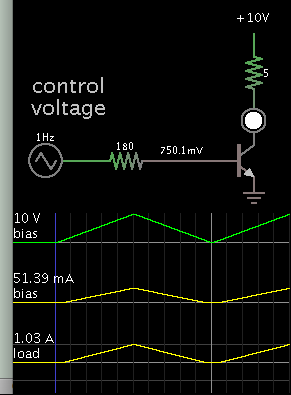600V3Phase
Junior Member level 3
Hello,
Ok, I'm rusty... Haven't touched electronics for a couple of years.... So help me god ....
....
I have a general question I would like to ask.
I was looking at this datasheet:
https://www.onsemi.com/pub_link/Collateral/LM317-D.PDF
At the circuit at the bottom of the first page. Can't we simply add a mosfet in parallel with R2 and control the fet by a 0-10VDC coming from a dac output to dim the LM317's voltage output?
In a nutshell my question is .... Would this idea work? Or am headed for disaster?
Basically I have a 0-10VDC (or I can have any range of voltage for that matter for ex: 0-5VDc ect...) coming out of dac which would be the control signal to drive the LM317.
My application is I would like to make one of Em 1A super bright LED driver. For now I would like to abstain from exploring the PWM with an op amp solution ect.... I am simply interested to see if this can be done in its simplest form as I explained.
Thanks for all feedback
Ok, I'm rusty... Haven't touched electronics for a couple of years.... So help me god
I have a general question I would like to ask.
I was looking at this datasheet:
https://www.onsemi.com/pub_link/Collateral/LM317-D.PDF
At the circuit at the bottom of the first page. Can't we simply add a mosfet in parallel with R2 and control the fet by a 0-10VDC coming from a dac output to dim the LM317's voltage output?
In a nutshell my question is .... Would this idea work? Or am headed for disaster?
Basically I have a 0-10VDC (or I can have any range of voltage for that matter for ex: 0-5VDc ect...) coming out of dac which would be the control signal to drive the LM317.
My application is I would like to make one of Em 1A super bright LED driver. For now I would like to abstain from exploring the PWM with an op amp solution ect.... I am simply interested to see if this can be done in its simplest form as I explained.
Thanks for all feedback
